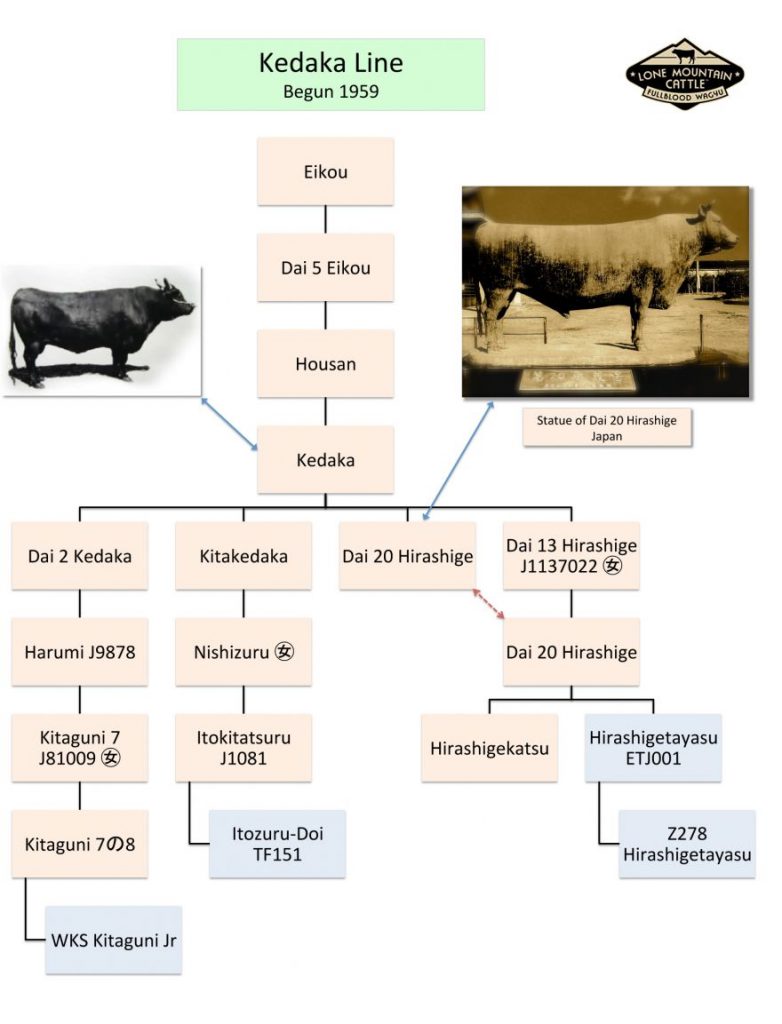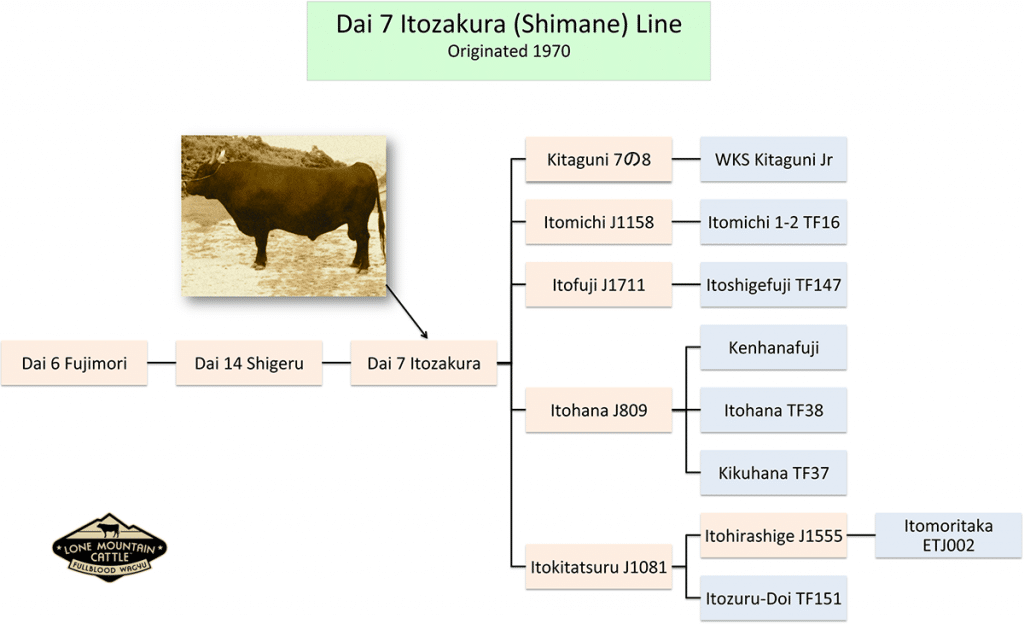For years, I had seen and heard references to Kenichi Ono’s three-volume series Outstanding Wagyu of Japan, but I had never been able to obtain my own copies. I sent inquiries to a mailing address in Japan, but they were evidently ignored or misdirected. Ono’s series was the definitive work on the genetic history of the Wagyu breed, so I was understandably frustrated.
Then, while in Yonago City, Tottori, attending the 9th Zenkyo (the All-Wagyu Show held in a different Japanese city every four years), I happened upon a booth selling books. Though unable to speak Japanese, I managed, through halting inquiry and serendipity, to stumble across stacks of books that looked as if they might be Ono’s work. They were sizable and had photos of Wagyu bulls on them.
As it turned out, I had indeed hit the jackpot.
After returning to the States, I contacted a translator named Yugo Osugi, and we have been collaborating ever since. I was able to find a fourth volume of Ono’s series while visiting the 10th Zenkyo in Sasebo, Nagasaki, in 2012.
What follows is a series of blog posts exploring Ono’s work. In this introductory section, I will lay out some basics.
I am indebted to Mr. Ono and Ms. Osugi, of course, as well as to all the people who have more-substantial credentials than I do — and who have already accomplished aspects of what I am about to attempt. They include professor Kiyoshi Namikawa, Mike Buchanan, Tak Suzuki, David Blackmore and Charles Gaskins, plus many others.
The origins of the Wagyu breed stretch further back than most people realize, and further back than I could possibly do justice to here.
The earliest written reference to Wagyu dates to about A.D. 1310. I will begin considerably later than that here, with Naka-Doi, a sire born in 1920.
It has been said that 90 percent of today’s Tajima-Hyogo line descended from Naka-Doi. But there is a considerable amount of controversy and confusion regarding whether a sire named Tajima even existed. Tajima may in fact refer to the area of origin. Ono makes no reference to a sire named Tajima in his works.
Tajiri, born around 1940, was unquestionably the most important descendant of Naka-Doi. The chart below simplifies the lineage of Naka-Doi and Tajiri in a manner that, ideally, is easy to understand.
Ono refers to Yasafuku J930 as a subset of the Yasutani-Doi line. What follows is a short guide to the Tajima-Hyogo line and the various strains that fall within that line.
The Yasumi-Doi line, begun in 1971, can be categorized as two types. The first is represented by such sires as Yasutani-Doi, Tadafuku and Yasumikane. The second type is represented by Monjiro. The differences between the two illustrate that classic trade-off between quantity and quality. The former has wide shoulders, and the latter, narrower shoulders. The former has good daily weight gain but its meat is deficient in flavor compared to the latter. Conversely, the latter has excellent flavor but lacks the economic benefits of the former. The bulls of the former are known for being opinionated while the bulls of the latter are known for skittishness. The former are better group feeders than the latter.
The attractiveness of Wagyu bulls is not a matter of much debate among cattlemen who do not raise them. But among cattlemen who do, there may be some general agreement about the Yasutani-Doi line: the bulls are not as handsome as other Hyogo Prefecture bulls. They have long foreheads and rough coats. The Yasutani-Doi line, begun around 1976, is not known for consistency in any area. But the best progeny comes from the Yasufuku line, which tends to show the best daily weight gain and meat quality.
The Yasufuku line, begun around 1980, is imbued with excellent qualities, including thick shoulders, large loin size and a high yield rate of meat. Kenichi Ono regards this line as perhaps the greatest of all Wagyu. One small quibble is taste. Steady weight gain and early maturation can lead to meat that lacks in flavor as compared to other meat in the Tajima-Hyogo line. Some progeny of Yasufuku, such as Yasufuku 165-9 and Ryunn (Gifu Prefecture), have great meat quality but are susceptible to fat necrosis, which is the destruction of fat cells by digestive enzymes.
The Kikumi-Doi, or Kikuteru-Doi, line is blessed with a number of admirable qualities. Among them are good meat color and milk volume. The calves are good nursers. But the line has generally been rife with disappointment. These cattle tend to have sluggish weight gain and bad dispositions. They can be generally nervous and specifically ornery. Because of these issues, only a limited number of bulls have been noteworthy. Terunaga-Doi and Nakazutsumi are among the more-marked successes. The weight-gain problem can be mitigated somewhat by using mothers from the Yasutani-Doi and Shigekame-Nami lines.
On the surface, the Kikuyasu-Doi line seems to have many of the best qualities of Hyogo Prefecture cattle. Among them are beautiful coats and handsome faces (according to Wagyu experts, who know a handsome cow when they see one). But the progeny’s scores are inconsistent. Only a few bulls in this line have been judged successful. They include Kikuyasu and Maruyu.
The Kumanami line originated in 1957 with the birth of Shigekanenami. Unlike the aforementioned four strains, all of which descended from the sire Tajiri, the Kumanami line descended from a female of the Naka-Doi line. Shigekanenami was easily the most popular bull in the Kumanami line. For a Hyogo Prefecture bull of its time period, Shigekanenami had exceptional weight gain and an outstandingly proportioned body. Its progeny had two sets of distinct characteristics: thick shoulders and good daily weight gain (Fukumasa and Otosha 6), and thin shoulders and a lack of hip width (Shigeshigenami).
Bulls descended from Shigeshigenami have the best consistency in terms of meat quality. Despite the superficial shortcomings of thin shoulders and a lack of hip width, the meat quality is typically extraordinary. Shigeshigenami was born in 1972 in Hyogo Prefecture but was sold to Miyagi Prefecture in 1974. In 1983, progeny of Shigeshigenami won first and second place in the “steers” category at a national dressed-carcass competition in Tokyo. Interest from outside Miyagi Prefecture in breeding with Shigeshigenami only seems to grow with each passing year.












